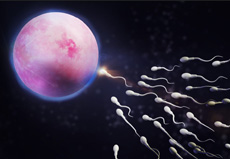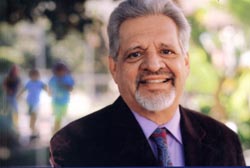The Overall Strategy to Helping Autistic People
Conrad Ho, Jul. 31, 2015, Hong Kong, China
Conrad Ho came across a brilliant online video clip in June 2015. In this documentary named “Living with Autism” by the British Broadcasting Corporation, Professor Uta Frith, a German developmental psychologist at University College London, talked about the latest scientific understandings of autism after her 50 years of research on the topic.
“Autos” in Greek means “self” or “ego”. The literal translation of autism is egoism. In Chinese, we call it Self Withdrawal Syndrome or Solitude Syndrome. Though having the same autism label, autistic people, in fact, have varying degrees of regression into their own private space. The phenomenon is similar to that of a continuum of extroverts and introverts in the normal population. Furthermore, while some autistic individuals have difficulties in their social lives and learning, some are geniuses. What is “autism” exactly?
Professor Uta has proposed the followings as the three important defining features:
Overfocus on the details while missing the big picture – she recruited some autistic and normal individuals to play a children’s game “Where’s Wally” (the respective numbers not being disclosed in the documentary). Both groups were told to look for Wally in an A2-sized picture, which depicted a beach packed with many people doing all sorts of activities. While all subjects in the autistic group only took 20-30 seconds to find the target, most subjects in the normal group had to struggle to complete the same task, with some even failing to do so without hint. This explains why some autistic people would react disproportionately when their things are moved without notice; and their scope of interests can be quite narrow.
They handle things only in their own perspectives, and assume that everybody is seeing what they are seeing. Again, Professor Uta recruited some autistic and normal kids to perform an experiment. She told them a story: “After Mary has put a glass bead in her own basket, she left for play. Tony took Mary’s glass bead and put it in his own box. When Mary came back for her glass bead, for where would she look? Normal kids would think in Mary’s perspective, so their answer was “Mary’s basket”. However, the autistic subjects answered that she would go to Tony’s box direct. They knew the glass bead was in the box, but did not understand that Mary had no knowledge of it. Autistic individuals cannot think in others’ shoes, so they have difficulty comprehending others’ thoughts, prompting some of them to withdraw into their own private worlds. As shown in brain scans, the brain centres responsible for social skills of autistic people are found to have markedly low level of activities relative to those of normal people.
Autistic people judge things in terms of utilitarianism, disregarding other seemingly irrelevant social or cultural factors. She cited an experiment conducted by another researcher: a child was seated across the table opposite to the researcher, who lightly tapped thrice on the lid of a wooden box before taking out the toy boat inside. Then, he asked the child to repeat the exact procedure. Normal children could accurately repeat all actions, including the meaningless tapping on the lid. Autistic children skipped the act of tapping the lid and opened the box directly to take the toy boat out. The latter tend to ignore those social and cultural factors with no practical value at the surface, which contributed to their difficulties in social relationships.
Through an in-depth interview with an autistic couple who are expressive of their feelings at the bottom of their hearts, Professor Uta upheld that it was a misconception that autistic people could not establish a meaningful and affectionate social relationship full of feelings. Autistic people do have empathy and emotions. Establishing such kind of social relationships is really difficult for them, but not impossible.
The lady of this couple is a popular trainer, who is an accomplished orator on stage. None will associate her with autism. Her way of doing it was that she would stay in bed after waking up for one full hour, just to repeatedly rehearse on what could possibly happen on that day and her contingency plans. However, when she bumped into any unexpected events, she would certainly freak out. She felt dreadful of these random happenings, and her best strategy was to keep rehearsing. This kind of fear and strategies explain well why some of the autistic individuals obsessively repeat certain actions/behaviors.
Professor Uta interviewed an Oxford University fellow, who was once her Ph.D. student. He said that if 0 stood for no autistic tendency whatsoever and 100 for absolutely strong autistic tendency, most people in the entire population (including the normal) would be clustering around 50 and the whole curve would be a normal distribution. According to his research, people being diagnosed with autism generally fell into the range of 80-82. He emphasized that everyone could find his/her place in this autism spectrum, with more or less autistic tendency. The only difference was that some people were disturbed about it, went for diagnosis and eventually labelled as autistic, while the rest just had not gone through the assessment. Autism was a clinical phenomenon, not a scientific fact.
Brain-scanning researches had already yielded some early markers of autism. For example, the brain center in the temporal lobe located a little bit above the ear is responsible for making sense of social behaviors. As a normal baby looks at the photos of some social activities, such as a group of children playing, oxygen consumption in this region will increase much; however, for those babies with siblings already being diagnosed as autistic, there is no significant increase in oxygen consumption. Even more interesting is that for those who have such early markers, not all of them will end up in autism. Autism is not a disorder out of one or two brain centers, but the result of the interplay among several. There are contributing as well as shielding factors. Possibly, these shielding factors have led to fewer autistic cases in girls, and protected some people from further deterioration into diagnosis.
According to what Professor Uta had said, as interpreted in the angle of neuroscience, autism is a phenomenon from an extreme over-emphasis on the operations of the logic brain hemisphere, or even of certain centers of it. This insight really rang a bell in me. The overall strategy to helping autistic people is to promote whole-brain integration and operations in them, just like helping people with other learning difficulties.
This was exactly what I did to an autistic client of mine at the age of 10. After one session on balancing the boy on the foreground-background relationships in his vision, audition and touch, his mother reported that he had become much calmer and more willing to listen to others. After another session on being aware of bodily sensations as a background of external events, he could stay composed when being teased (before, a fight would usually break out). His mother was pleased and I was satisfied.











